Between Word and Image: The Creative Mind of David Jones
David Jones (1895–1974) was an artist, poet, writer and craftsman; a name synonymous with the Modernist era but one that still remains lesser known...
Guest Profile 21 October 2024
Hermenegildo Bustos was one of Mexico’s most renowned painters of the 19th century. Despite the lack of Academic training, his portraits stood out for their vivid depiction of the sitter’s personality. His realist style contrasted with the idealized works of the academicians. Thanks to his talent, he received commissions from family, friends, common people, and members of high society. He experimented with a variety of genres, from still lifes that reflect the gastronomy of the region to ex-votos and religious paintings. He self-identified as an aficionado (amateur) artist.
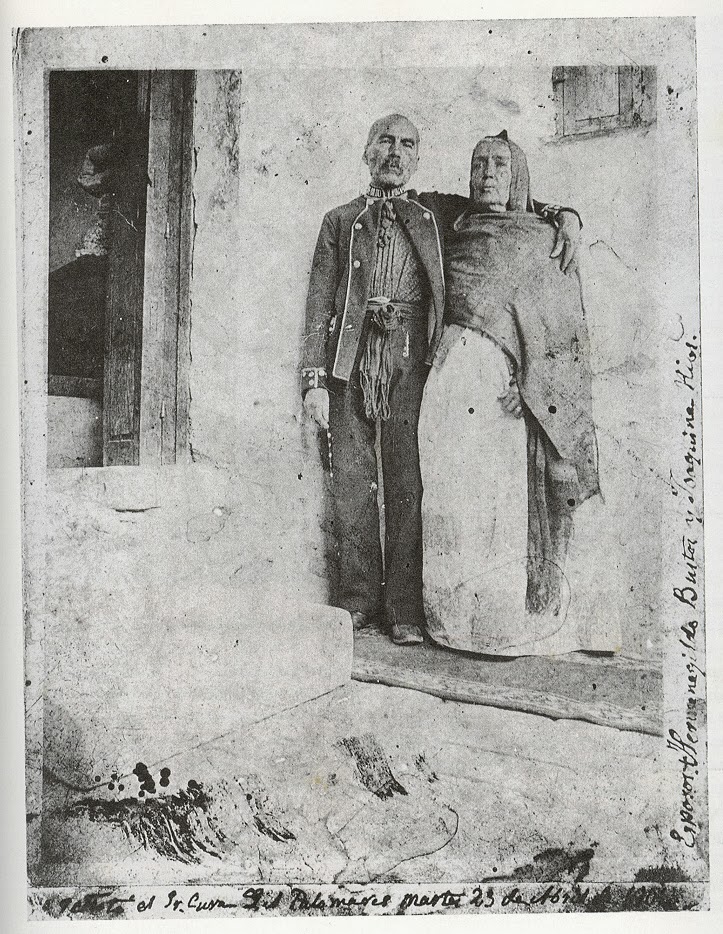
Hermenegildo Bustos and his wife Joaquina Ríos, 19th century. Pinterest.
José Hermenegildo de la Luz Bustos Hernández was born in the town of Purísima del Rincón in Guanajuato, Mexico in 1832. He remained in his hometown most of his life. There are rumors that he trained with a painter called Herrera, however, there is not enough information to verify this fact. In any case, he identified himself as an aficionado (amateur) artist. Apart from this, he often highlighted the indigenous part of his heritage. Bustos grew up in a deeply religious family, which influenced him throughout his career. He married when he was 22 years old to Joaquina Rios, but the couple never had kids. Although he enjoyed recognition for his paintings, at the end of the 1870s he had other trades. He worked as a sacristan, carpenter, and mason, among others.
Bustos’ most acclaimed genre was the portrait. Even though he had no formal education, his depictions are outstanding. Most probably, that lack of academic training allowed him to capture a more honest and less idealized image of the sitters. Here are some examples of his work.
Arguably his most important sitter was President Benito Juárez, who visited Bustos’ hometown in 1858. Unfortunately, the sketch was destroyed after the death of the painter.
An important part of his career was the production of ex-votos. These were paintings of small format which illustrated an unfortunate event where a holy figure intervened. They were made to show gratitude to said figure and they were accompanied by the description of the event. Anyone could make them, but some people asked professional artists for better results, among them Hermenegildo Bustos. His compositions were simple but effective. His backgrounds were solid to emphasize the donor who appeared in a prayer as the divine figure floated over a white cloud.
The ex-voto below comes from a woman named Cipriana Serrano whose ox had been agonizing for four days until the Holy Virgin saved it.
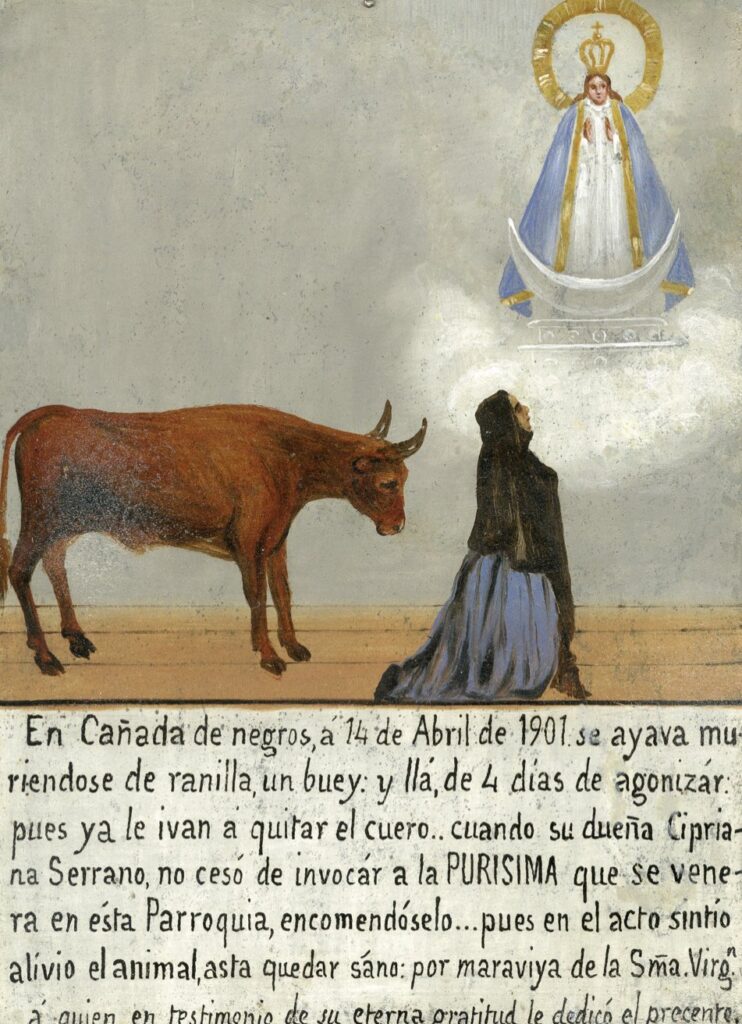
Hermenegildo Bustos, Ex-voto of Cipriana Serrano, 1901, Museo Nacional de Arte, Mexico City, Mexico.
Another genre in which Bustos experimented was the still life. These were somewhat different from the usual works we see in the European art. Instead of being arranged in bowls or on complex table settings, they appeared displayed over a white surface, separate from each other. It showcases the food of the region, as well as the fauna such as scorpions and frogs.
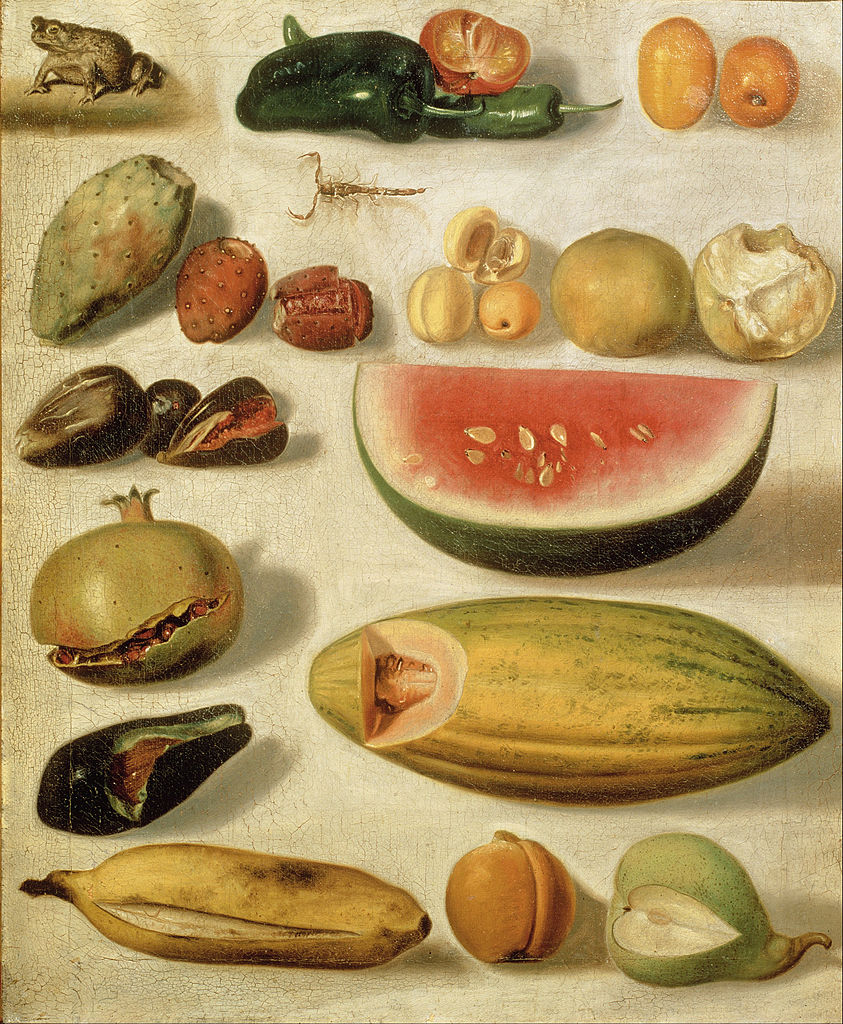
Hermenegildo Bustos, Still Life with Fruit (with Scorpion and Frog), 1874, Museo Nacional de Arte, Mexico City, Mexico.
Hermenegildo Bustos was a man of faith and he showed it through his service to the church of his hometown. He made the altar below that depicts scenes from the Passion of Christ.
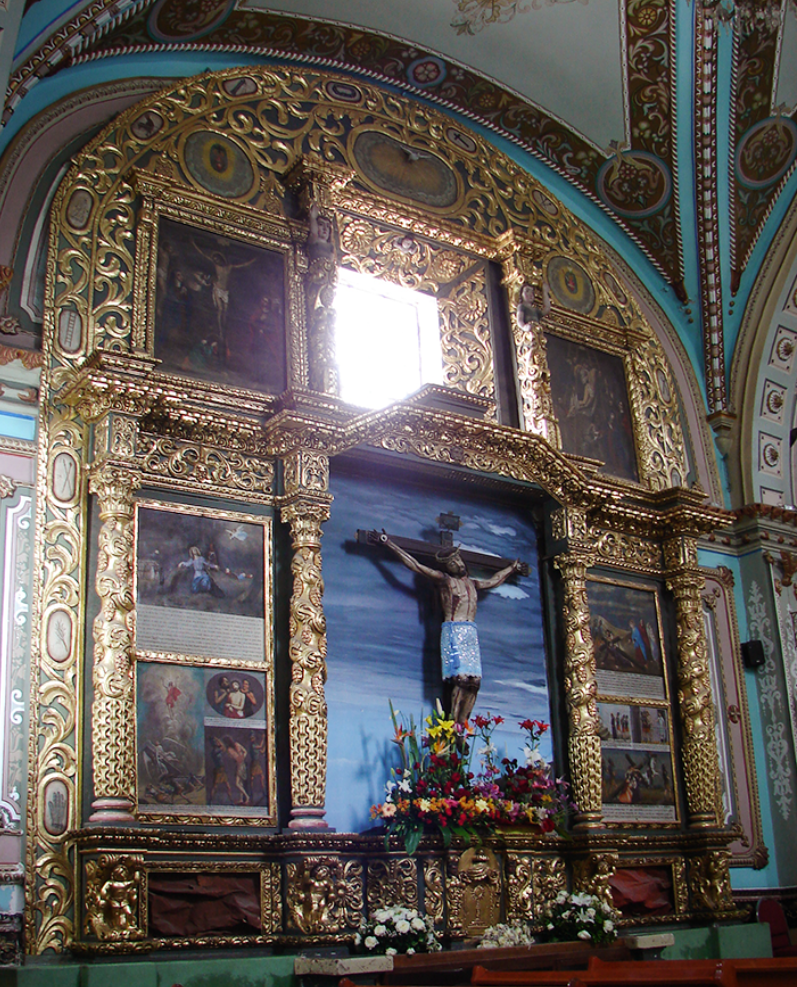
Hermenegildo Bustos, Altar of the Holy Burial of Our Lord Jesus Christ, 19th century, Parish of the Immaculate Conception, Guanajuato, Mexico. Photo by Carolusa González Tirado/Estudios sobre Conservación, Restauración y Museología.
One of his many interests was astronomy. He did not have any formal education on the matter, but just like painting, he learned by himself. Various paintings reflect his studies of the sky, such as the one below where he recorded an eclipse. He wrote down the exact date, September 16th, 1883 around three and a half in the morning. He described the event as a red dawn that disappeared before the sun came up and then it came up during the whole day.
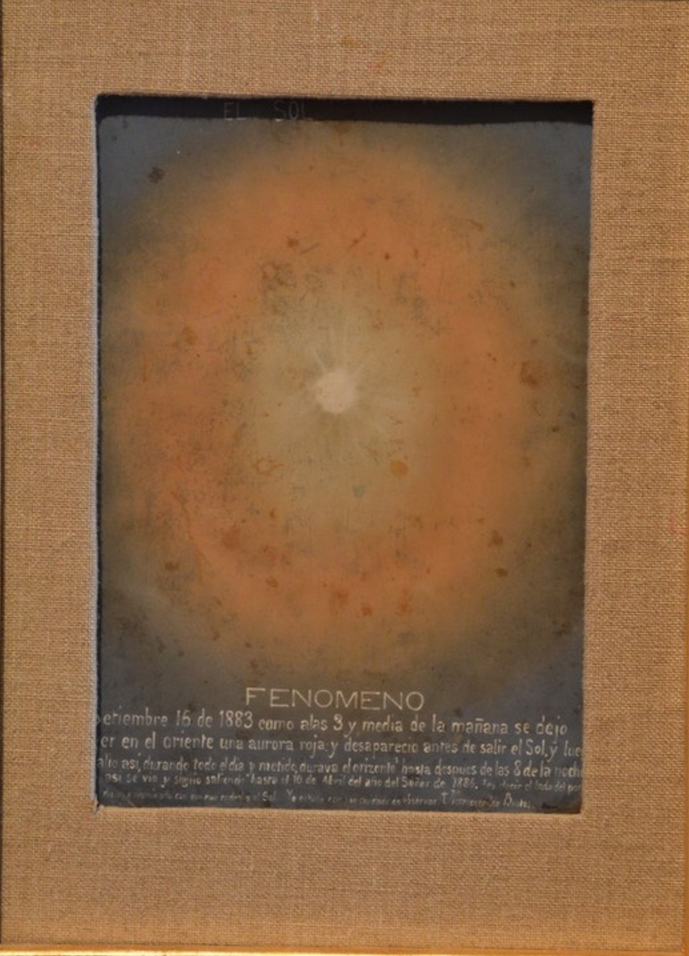
Hermenegildo Bustos, Solar Eclipse (Phenomenon), 1883, Instituto Nacional de Antropología e Historia, Mexico City, Mexico.
Hermenegildo Bustos died in 1907, one year after his wife. He used his skills as a carpenter to make both coffins. His fame may have stayed local for a few decades, but after the Revolution in the 1910s and 1920s, his work became highly prized. He left hundreds of works that now belong to the most reputed museums in Mexico. Due to his contribution to Mexican art, his hometown’s name changed to Purísima de Bustos.
Conferencia: “Lo Secular y lo Sagrado en la Obra de Hermenegildo Bustos,” 2021, Facebook. Accessed 8 Mar. 2024.
Hermenegildo Bustos, 1832-1907, Colección Blaisten. Accessed 8 Mar. 2024.
Jorge Durand: “Los Retablos de Hermenegildo Bustos” in Exvotos, 2000, No. 53, Artes de México. Accessed 8 Mar. 2024.
Carolusa González Tirado: “El retablo del Santo Entierro en Purísima de Bustos Estudio de sus pinturas y esculturas y su relación con Hermenegildo Bustos” in Estudios sobre Conservación, Restauración y Museología, Vol. 3, 2016, INAH. Accessed 8 Mar. 2024.
Christopher Knight: “ART: Mexico’s Unsung Master: Hermenegildo Bustos’ brilliantly perceptual paintings–once solely the pride of his town–are beginning to gain due appreciation” in Los Angeles Times, Dec 15, 1991. Accessed 8 Mar. 2024.
Eleanor Laughlin: Bustos, Hermenegildo, 2003, Oxford Art Online. Accessed 8 Mar. 2024.
DailyArt Magazine needs your support. Every contribution, however big or small, is very valuable for our future. Thanks to it, we will be able to sustain and grow the Magazine. Thank you for your help!